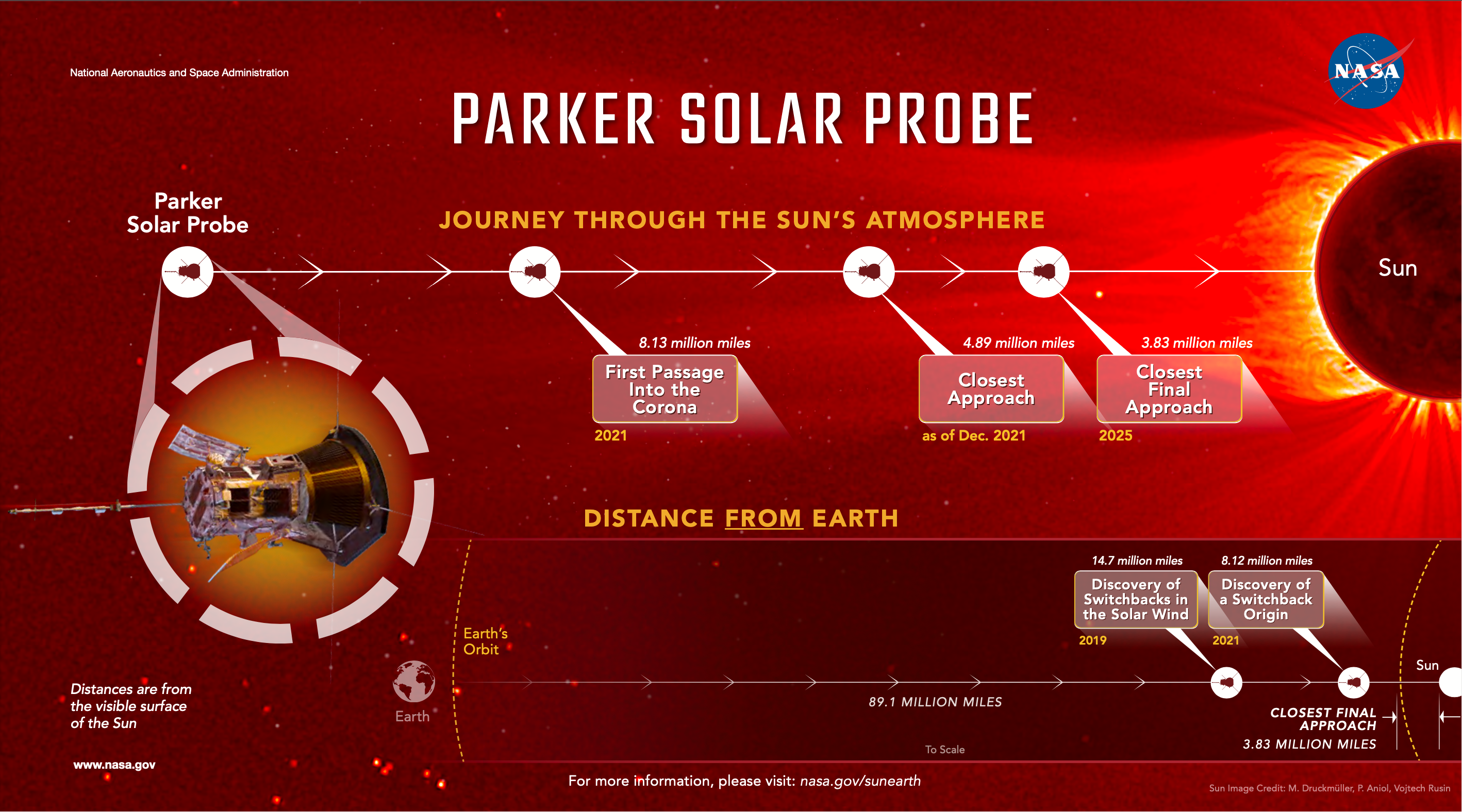Nasa probe becomes first spacecraft in history to ‘touch’ the Sun
Probe flew through Sun’s extremely hot upper atmosphere – a feat once thought to be impossible
In a historic first, Nasa’s Parker Solar Probe has finally “touched” the Sun by flying through the star’s extremely hot upper atmosphere of about two million degrees Fahrenheit – a feat once thought to be impossible.
The probe sampled particles and magnetic fields as it flew through the Sun’s upper atmosphere – the corona – using a key onboard instrument known as the Solar Probe Cup, an advance that would help scientists unravel critical information about the Sun’s influence on the solar system.
The solar corona is the outermost layer of the Sun’s atmosphere where strong magnetic fields bind plasma and prevent turbulent solar winds from escaping, explained researchers.
Data collected by the Solar Probe Cup and published in the journal Physical Review Letters on Tuesday revealed that the spacecraft entered the corona three times on 28 April and at one point, for up to five hours.
“At 09:33 UT on 28 April 2021 Parker Solar Probe entered the magnetised atmosphere of the Sun 13 million km above the photosphere,” the scientists wrote in the study.
“Parker Solar Probe ‘touching the Sun’ is a monumental moment for solar science and a truly remarkable feat,” Thomas Zurbuchen, the associate administrator for the Science Mission Directorate at Nasa’s headquarters in Washington, said in a statement.
Researchers believe the historic milestone will provide deeper insights into the Sun’s evolution, its impacts on the solar system and on the other stars in the rest of the universe.
“The goal of this entire mission is to learn how the Sun works. We can accomplish this by flying into the solar atmosphere,” Michael Stevens, an astrophysicist at Harvard and Smithsonian’s Centre for Astrophysics, said in a statement.
“The only way to do that is for the spacecraft to cross the outer boundary, which scientists call the Alfvén point. So, a basic part of this mission is to be able to measure whether or not we crossed this critical point,” he added.
Prior to 28 April, scientists said the Parker probe had been flying just beyond the Alfvén point – when solar winds exceed a critical speed and can break free of the corona and the Sun’s magnetic fields.
This point, the researchers explained, marks the end of the solar atmosphere and the beginning of the solar wind.
They said that solar wind beyond this critical point moves so fast that waves within the wind cannot ever travel fast enough to make it back to the Sun – severing their connection.
“If you look at close-up pictures of the Sun, sometimes you’ll see these bright loops or hairs that seem to break free from the Sun but then reconnect with it,” Dr Stevens explained.
“That’s the region we’ve flown into — an area where the plasma, atmosphere, and wind are magnetically stuck and interacting with the Sun,” he added.
During its flyby, the probe passed into and out of the corona several times, proving an earlier prediction that the Alfvén critical surface isn’t shaped like a smooth ball but has spikes and valleys that wrinkle the surface.
The researchers believe discovering where these protrusions line up with solar activity coming from the Sun’s surface can help scientists understand how events on the star affect its atmosphere and the solar wind.
The Parker probe was launched in 2018 to unravel the mysteries of the Sun by traveling closer to it than any spacecraft before.
In 2019, the probe discovered that magnetic zig-zag structures called switchbacks in the solar wind were in abundance close to the Sun, but their origins have remained a mystery.
Nearly reducing its distance to the Sun by half since then, Parker passed close enough to find that these magnetic structures originated from the solar surface.
At one point, the probe dipped to just beneath 15 solar radii – or around 10.4 million km from the Sun’s surface – during which it transited a feature known as pseudostreamers.
These are massive structures that rise above the Sun’s surface and can be seen from Earth during solar eclipses.
Passing through the pseudostreamer was like flying into the eye of a storm with conditions quietened and particles slowed down– a dramatic change from the busy barrage of particles the spacecraft usually encounters in solar wind, Nasa noted.
These conditions, the space agency said, were definitive proof the spacecraft had passed through the Alfvén critical surface and entered the solar atmosphere.

The Parker probe will continue making new discoveries that other spacecraft could not see as they were not as close, the space agency said in a statement.
These discoveries could come from within the solar wind – the flow of particles from the Sun that influence Earth, it added.
“I’m excited to see what Parker finds as it repeatedly passes through the corona in the years to come. The opportunity for new discoveries is boundless,” Nicola Fox, division director for the Heliophysics Division at Nasa’s headquarters, said.
Join our commenting forum
Join thought-provoking conversations, follow other Independent readers and see their replies
Comments
Bookmark popover
Removed from bookmarks